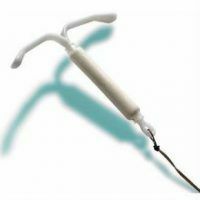
One of the best contraceptives today is the intrauterine device. Most often for its manufacture, plastic and copper are used, and more expensive models are created using gold and silver. The spiral reliably protects against pregnancy and has an anti-inflammatory effect. To understand which intrauterine device is better, it is necessary to study the mechanism of its action, its advantages, disadvantages and peculiarities of use.
- action
- Principle Special features
- Types
- Nova
- Juno Bio
- Multiload
- Mirena
- Removing spiral
- Side effects Contraindications
- Reviews
Operating principle
IUD has a devastating effect on the sperm, resulting in the egg remains unfertilized. In addition, since the spiral is located in the uterus, the egg does not have a place for implantation, and it leaves the female body with the nearest menstruation.
Modern spirals secrete female hormones, gestagens or copper ions, into the uterine cavity. These active substances increase the contraceptive effect.
to contents ^Features of the
installation Before installing the spiral, the gynecologist is obliged to conduct an examination, determine the size and position of the uterus, and take the necessary tests.
At this point, the cervix is slightly ajar, so the procedure is quick and easy. The spiral is introduced by means of a special conductor. The control threads are left in the vagina. The whole process lasts 5-7 minutes. A woman after the procedure may experience small bleeding from the vagina, which is a natural reaction of the body. The spiral is placed for about five years, after which it must be removed.
After installation of the spiral, it is necessary to regularly check the length of its threads, visit the gynecologist once every six months. Within a week after installation, sexual rest, lack of physical activity is recommended.
Types
Intrauterine spirals can be different. The main difference is the material of manufacture, dimensions and shapes. The most common options are:
to contents ^Nova
The spiral differs in T-shape and is made of flexible polyethylene. The contraceptive includes active substances:
- copper;
- silver;
- barium sulfate;
- is iron oxide.
Nova T is a physiological spiral that neutralizes the ability of spermatozoa to fertilize an egg. The intrauterine device is installed only by a gynecologist, and the period of its operation is from 30 months to 5 years. The main advantages of Nova spiral: 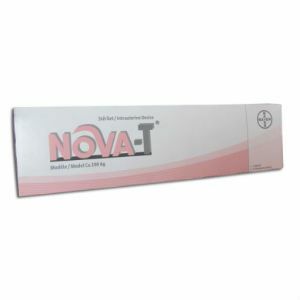
- starts to operate from the moment of installation;
- does not affect sexual activity;
- does not affect breastfeeding;
- after the removal of the spiral, the ability to procreate is returned already in the next cycle;
- requires only one repeat visit to the gynecologist after installation;
- is economical.
Juno Bio
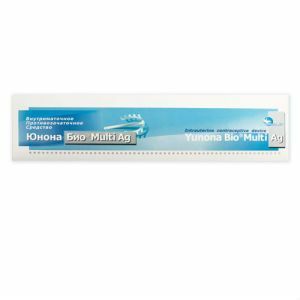 A domestic-made spiral, the principle of which is based on the fact that a device of small sizes made of plastic with copper and silver is introduced into the uterine cavity. As a result, the process of attaching the egg to the uterus is blocked, and the motor function of spermatozoa is inhibited.
A domestic-made spiral, the principle of which is based on the fact that a device of small sizes made of plastic with copper and silver is introduced into the uterine cavity. As a result, the process of attaching the egg to the uterus is blocked, and the motor function of spermatozoa is inhibited.
There are the following types of Juno Bio spiral:
- Juno Biot-T is made of plastic and has a T-shape. On the basis of the spiral, a copper wire is wound and a monofilament yarn is fixed. Duration of operation - 5 years.
- Juno Bio-T Super - supplemented with an anti-microbial composition that contains propolis. The duration of contraception is 5 years.
- Juno Bio-T Ag - on the vertical shaft is a copper-silver wire, and also fixed a monofilament thread. Duration of operation - 7 years.
- Juno Bio is annular - the diameter of the plastic ring is 24 or 18 mm. Inside it is a copper wire and a monofilament thread. Duration of use is from 3 to 5 years.
- Juno Bio is annular in shape with Ag - the diameter of the plastic ring is 18 mm. Inside the ring is a copper-silver wire with a monofilament thread. Duration of use is from 5 to 7 years.
Juno Bio is most often recommended to women who:
- aborted;
- often gave birth;
- have large sizes of the uterus.
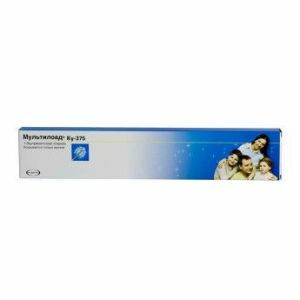 Multidimder This type of spiral refers to nonhormonal intrauterine contraceptives and resembles a semi-oval in shape, where the branches terminate in spike-like protuberances, allowing the spiral to be better entrenched in the uterus. Multiload is made of polyethylene with the addition of copper, which makes inactive spermatozoa. A similar contraceptive is indicated for women who have a uterus from six to nine centimeters in length. The period of its use is from 3 to 5 years.
Multidimder This type of spiral refers to nonhormonal intrauterine contraceptives and resembles a semi-oval in shape, where the branches terminate in spike-like protuberances, allowing the spiral to be better entrenched in the uterus. Multiload is made of polyethylene with the addition of copper, which makes inactive spermatozoa. A similar contraceptive is indicated for women who have a uterus from six to nine centimeters in length. The period of its use is from 3 to 5 years.
Mirena
The most effective and expensive intrauterine device that will reliably protect against unwanted pregnancy for five years. The Mirena is T-shaped and consists of a plastic rod with a container in which the levonorgestrel hormone is located, and the shoulders. The hormone is dosed at 14 mcg per day from the container to the uterine cavity. This amount of substance is sufficient for the contraceptive effect.
Mirena is not recommended for women who have: 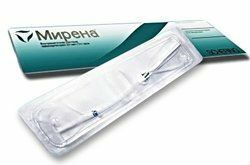
- hypersensitivity;
- liver pathology;
- infectious diseases of the excretory system;
- otosclerosis;
- hormone-dependent swollen;
- predisposition to thromboembolism.
Deletion of the spiral
When the spiral ends, it must be removed. Sometimes the procedure is carried out earlier, for the following reasons:
- Displacement of the spiral inside the uterus. The first sign is a change in the length of the antennae.
- Pregnancy - the extraction is carried out with both normal and ectopic pregnancies.
- Desire to have a child.
- Growth of uterine tumor after spiral installation.
- Inflammation of the uterus and its appendages.
First he examines a woman, assesses the state of the spiral and the possibility of its elimination. Direct removal of the spiral is carried out by several methods:
- During menstruation with local anesthesia,
- With hysteroscopy,
- Through the abdominal cavity, if there is no way to get the spiral through the vagina.
Side effects of
Side effects most common after spiral installation:
- enhancement of menstrual flow and increase in their duration:
- occurrence of menstrual or ovulatory pain;
- increased risk of developing infectious diseases.
The risk group includes women who:
- do not comply with the rules of intimate hygiene;
- have a partner who is the carrier of the infection;
- have suffered inflammatory diseases of the genital system;
- had no childbearing activity yet.
A pledge of safety and effectiveness of the intrauterine device is an appeal to a highly qualified gynecologist and an attentive attitude towards your body.
to table of contents ^Contraindications
The intrauterine device is an effective remedy for an unwanted pregnancy. In this case, there are various contraindications.
Let's consider them in more details.
Absolute contraindications:
- infectious diseases of the genital system, both acute and chronic;
- pathologies, uterine fibroids or polyps;
- oncological diseases of the genital organs;
- abnormal uterine bleeding;
- allergic reaction to copper;
- pregnancy;
- adolescence.
Relative contraindications:
- ectopic pregnancy in the past;
- disorders of the menstrual cycle;
- pathology of the cardiovascular system;
- endometriosis;
- coagulopathy;
- promiscuous sexual intercourse;
- scars on the uterus or its small size;
- no pregnancy.
Reviews
Intrauterine spirals are popular with women. Despite the contradictory rumors about them, in general, the reviews are positive:
Oksana, 28, Novosibirisk: "Nova is an excellent contraceptive, especially if you have recently given birth. For the next five years after installing the spiral, you can forget about contraception. When installed, it feels a little pain, but it quickly passes. Reliability is about 98%, but only if properly used. "
Marina, 32, Saratov: "If you have one permanent partner, Juno Bio is an ideal contraceptive. Especially if you do not like pills and condoms. Juno has an annular shape, so it may not suit everyone. But if the installation is successful, for three or four years you can forget about the need for protection. "
Natalia, 35, St. Petersburg: "Intrauterine spiral Multiload was advised to me by my gynecologist - a very experienced doctor. Multiload does not contain hormones, it has an oval shape with denticles, which prevents its loss. At installation the pain is tolerable. Menstruation is as usual. My husband is happy - do not think about the end of condoms and urgently run after them to the pharmacy. "
Tamara, 25 years old, Omsk: "I want to describe my feelings from the use of the intrauterine spiral Mirena. I put it on the recommendation of my gynecologist. An additional argument was the producer's promise to reduce the duration of critical days. But the first week after installation was very difficult. Gradually everything became normal. "
